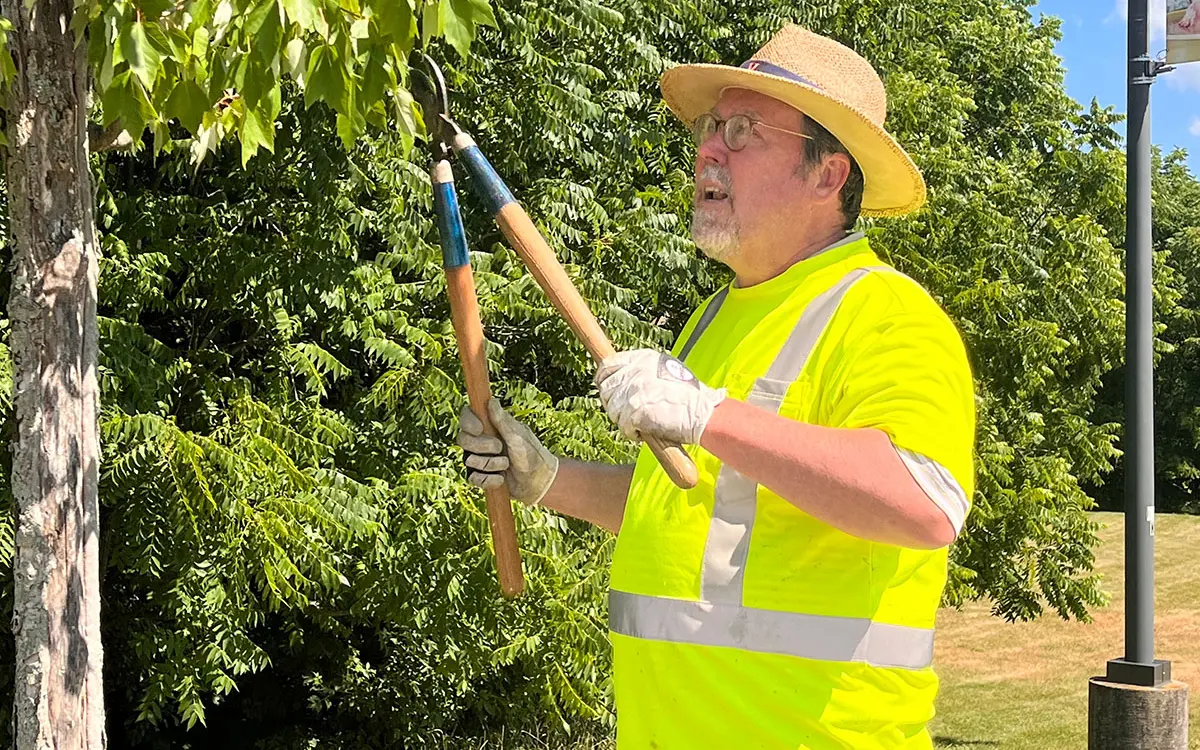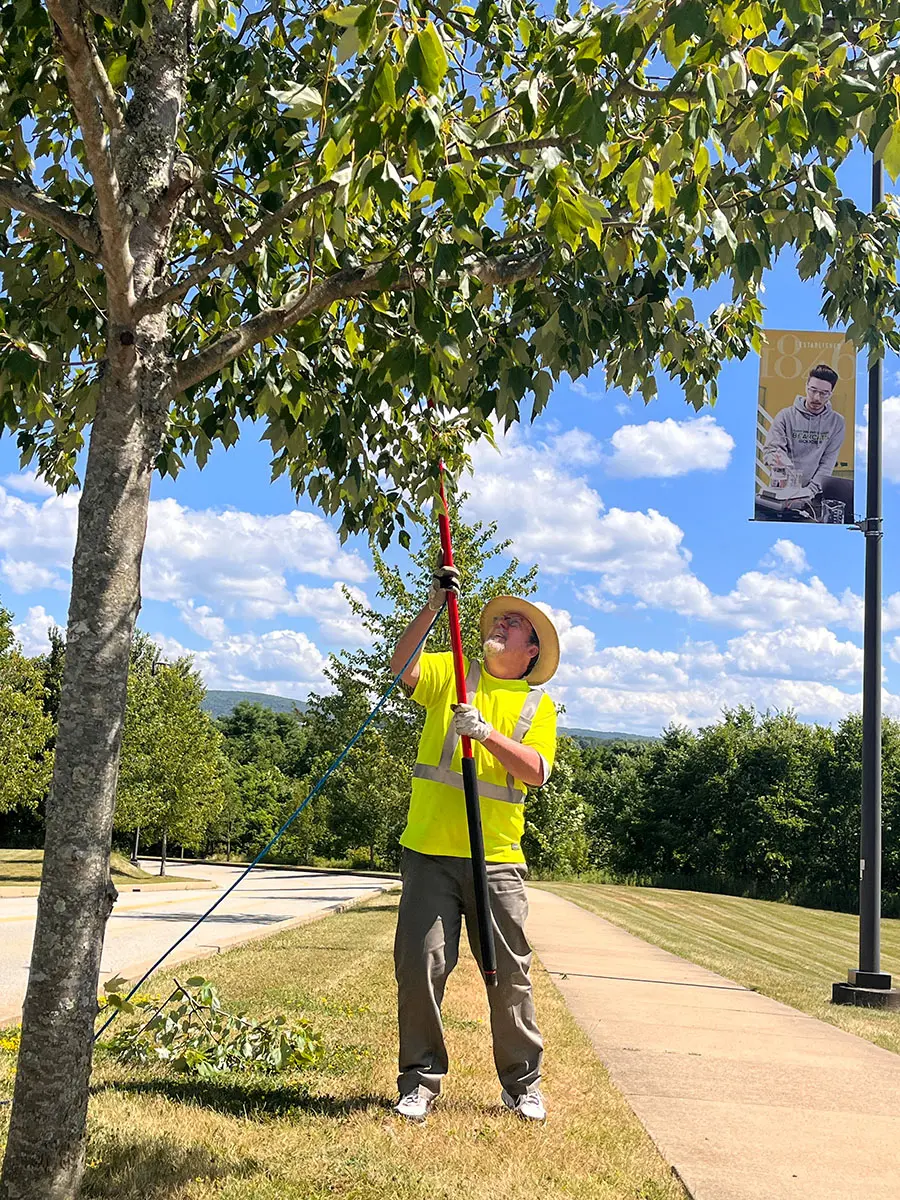LATROBE, PA – The short, winding stretch of Fraser Purchase Road that serves as the main entrance to Saint Vincent College is lined by 45 red maple trees. On a recent sunny afternoon in late June, however, it was more like 44½.
“This one’s a mess,” Dr. Tom Cline said as he walked toward a short, scrawny tree that slouched near the guard rail about midway up the drive. The tree’s bark was peeling, and only a few brave leaves poked out of one branch. Using the saw on one end of his extendable tree pruner, Cline grunted as he hacked off the gray, brittle top portion of the tree and dragged it into the brush.
“It’s probably not going to make it,” Cline said, gesturing toward the stumpy remnant. “But I don’t want us to take it down yet. I have hope for everything.”
Driven by his innate optimism and respect for the Benedictine values of stewardship and reverence for creation, Cline has tended to Saint Vincent’s maples the past three years. Although he already has a full-time gig as a professor of business in the Alex G. McKenna School of Business, Economics and Government, Cline cheerfully volunteered for the extra work.
“When I drove onto campus, I’d see a lot of dead lower branches that were really ugly,” Cline said. “The trees were neglected, and I just couldn’t take it. You can't plant trees and ignore them. I wanted to save these maples. So, I asked for permission and Father Paul [Taylor, O.S.B., president of Saint Vincent] was kind enough to say, ‘I trust you.’”
Red maples are indigenous to Pennsylvania and are found from Maine to Minnesota and Florida to Texas. Their sap can be used to make maple syrup. Some folks refer to them as “swamp maples” because they are a wetland species of tree. The average lifespan of a red maple is 80 years, although some have survived 100-plus years.
Wearing reflective safety vests and lugging clippers and the 20-foot pruner, Cline and his wife, Sally, attend to the trees four or five times a year, mostly in the summer and fall. At the outset, there was a lot of heavy clean-up work to do—some of the trees were being choked by forgotten strings of burned-out Christmas lights—but now it’s mostly maintenance.
“I don’t use power tools in keeping with the mission of limiting pollution,” Cline said as he went to work with his clippers. He trimmed a couple of small shoots near the bottom of one trunk, then pruned a mass of tangled branches. His goal is to “open up” each tree so it will get enough sun and grow straight up and strong.
“We really have to train [the trees] to grow,” Cline said. “We can’t just plant them then walk away and hope for the best. It’s like our faith—we have to plant it and nurture it.”
The yard work is good experience for Cline, who is studying to become a board-certified Master Arborist. He has been inspired and assisted by two Master Gardeners: Br. Elliott Maloney, C’68, S’72, O.S.B, the Archabbey’s landscape liaison to the College, who has directed a work study landscaping crew year-round since 1976, and Mark Abramovic, an instructor of business administration in the McKenna School.
Archabbot Boniface Wimmer once noted, “People plant trees though they know this will only benefit the next generation.” Cline takes a similar approach to his volunteer work as the tender to the trees of Saint Vincent.
“We take care of these trees because they’re from God and they’re growing,” Cline said. “I need to work on them now before they get too big—in 10 years I won’t be able to reach them. My job is to make sure they’re still here in 80 years.”

Dr. Tom Cline prunes one of the red maples that line Fraser Purchase Road near the entrance to Saint Vincent College

Dr. Tom Cline uses the extendable pruner as he tends to one of the red maples.